Carl Stone, circa 1973, Photo by Loretta Ayerhoff
Twenty-five years ago Carl Stone was already a legend to me and my Boston area community of baby DJs and burgeoning electronic music producers. His album Mom’s had appeared on our collective radar and we were floored. Who was this guy? How did he make such unpredictably ecstatic music? Our questions ranged from the philosophical (what kinds of compositional ideas gave rise to these sui generis structures?) to the technical (how on earth did he coax organic intricacies out of the machines?) and they had us all talking. The matter-of-fact cover photograph of a barbecue restaurant made the music behind it even more mysterious.
Carl-curiosity united us because his work spoke to so many of our varied concerns. The DJs were in awe of his ability to radically transform samples; the composers studied the way organizational flexibility dovetailed with precision; the noise people heard a shared appreciation for deconstructed textures; interdisciplinary artists took inspiration from his frequent collaboration with dancers; ambient fans loved the slowly evolving works whose duration challenged standard musical consumption formats… And on it went. Everybody who felt a little bit outsider intuited that Carl Stone was one of us: obsessed with music yet unbeholden to genre-pigeonholing or the simple-yet-persistent impulse to make oneself legible via some pre-existing exterior framework. Wanna explore sound from the inside out? Start by surrendering to whatever enters the ear.
Carl’s output dissolves many of the binaries by which aesthetic experience is classified: it’s ornate and streamlined, placid and overwhelming, austere and ridiculous, atomized and collective, recognizable and alien, riotously original and notably thefty. This work celebrates the power of and. There is always more, more and more, metabolized in ways that suggest further openings. Carl Stone shatters songs in order to upend our expectations of what a song can be, and he achieves this by joining audio slivers together, or by stretching a few seconds of sound into a quarter-hour moment.
This 3xLP, Electronic Music from 1972-2022, provides a great introduction to Stone’s work across the years, from his first compositions for tape, “Confusongs” and “Ryouund Thygizunz” (1972); to the joyous “Vim” (1987), one of his early pieces for computer-controlled sampler; to the brand new “Walt’s” and “Merkato,” made 50 years later using self-built software code written in the MAX programming language. Luckily for us, whereas it once was difficult to access his albums, releases such as this one have made it easier to encounter his work. Indeed, as he enters his 70th year, Carl’s output rate as well as his overall tempo appears to be speeding up!
In an essay for Artforum, I wrote: “Carl Stone has been cutting music into very small pieces for a very long time. His oeuvre constitutes a powerful investigation into timescales and recorded sound fragments as compositional building blocks. It emerged in parallel with hip-hop, starting with turntables and audio tape in the ’70s, and evolved to use custom code for a laptop.”
Across his equipment changes I believe that the underlying impulse remains the same, possessed of a liberatory spirit shared by turntablism and hip-hop sampling: What we’ve been given is not what we must reproduce. To put it more bluntly: Free your tools and your mind will follow.
This lesson grows in urgency today, when our most intimate possessions track our movements, datamine our communications, and apply algorithmic controls that steer our expressive desires towards murky, corporate-nihilist ends. The ways in which smartphones try to limit our musical engagement to thin, carefully controlled streams are merely the tip of the iceberg…. Point is, Carl’s brilliantly idiosyncratic deployment of various recording and playback technologies forms a case study in how creative tool misuse provides a key method to usher new experiences and perspectives into the world.
And it makes for some stunning music.
People often say that “life is transient” – meaning that every instant should be savored because our time here is fleeting. For the past 50 years, Carl Stone’s work has suggested another, equally profound phrase: life is transients. Transients are the first few milliseconds of a sound, also known as its ‘attack’. Most of the perceived character of any given noise, what makes a sound distinctive/recognizable, lies in its transients. The briefest, tiniest parts of a sound hold enormous significance. This is simultaneously a non-metaphorical fact (thank you, psychoacoustics) and a beautiful way to think about how culture forms (thank you, Mom’s). Carl Stone treats transients as the secret sauce that they are.
Reordering, extending, or otherwise wilding out on small pieces of sound/time is a process that he sometimes calls “anagramming.” Anagramming gets at the heart of what sound is by breaking down a sound’s language into its core parts. Odd truths crack open: Carl Stone = Stolen Car.
To listen to a song with its normative linearity removed is to taste the strangeness of now. Similarly, genre, in Carl’s work, isn’t a set of formal choices or stylistic parameters, it is that which can be disregarded. With that out of the way, his work suggests, we can hear what remains.
Few other musicians are able to make music that gets at sound with such directness.
A generous artist will give you more and more. Material that’s as fun to listen to as it is to think about. More questions, more ways to move. So let’s thank Carl for a lifelong commitment to keeping our ears open to all the mystery and joy and wonder that fit inside a moment. I’ve grown with his music over the years, and it still possesses the ability to challenge my assumptions and make me laugh out loud in delight. I couldn’t ask for anything else. And is it just me, or is his newest work the most optimistic?
- Jace Clayton

Carl Stone, Los Angeles, 1987, Photo: Ed Colver
This record is paradoxical, simultaneously an archival release marking Carl Stone’s evergreen 70th birthday and a document of archival art. In the spirit of disorienting repetition and layering, call it an archive of archiving.
Stone’s practice emerged from the repetitive archival process of his graduate job at CalArts preserving vinyl recordings by dubbing them to tape. With perhaps 10,000 albums ranging from Renaissance and electronic works to music from across the globe, he had to re-record multiple discs concurrently, creating chance collisions and coincidences.
In the decades since, he’s explored various ways to compose this process, creating temporal envelopes in which found sounds – existing tracks or field recordings – can take form. Whilst the technologies he’s used have changed and samples have varied beyond categorisation, what’s remained consistent is his concern for organising temporal experience using fragments of pre-existing sounding events.
His impish collage-like constructions of times cut from time suggest that archival records are neither wholly in documents preserved from change nor in living memories and use, but in their interaction. Repetition plays a key role. He cites the poet René Char, that “each act is virgin, even the repeated ones.” Repetition brings (often pleasurable) familiarity – perhaps a sense of déjà écoute – but as lived time is irreversible it brings together past and present simultaneously. This is how Tape Music – as it was then called – developed experimental practices investigating time through processes of transformation: loops, layers, delay systems, echoes, reversing, filtering, panning, modulating, cutting and pasting, changing speed, pitch, reverberation and intensity, as well as synthesizing sounds. Three Confusongs (1972) and Ryouund Thygizunz (1972/73) – both created with z’ev before his dubbing room revelation – use these strategies to transform vocalised utterances (“Am I recording?”) with heterophonic variations – like a temporal fractal – inspired by Charles Amirkhanian and Lars-Gunnar Bodin’s text-sound-movement practices.
American experimental music prized psychoacoustic effects, sonic phenomena that cannot be found in the sound object alone; Stone’s early work shows an interest in phantom beats and intensities. Sounds did not occur ‘in time’ – as if time were separate, measurable, and abstract – but alongside listening they composed temporal experience. Samples could be particularly effective material because the congealed time they contained prompted re-cognition whilst simultaneously processing their active transformation. Stone’s work artfully deploys procedures in which recognisable samples – or sounds made familiar through repetition – metamorphose beneath conscious perception, becoming alien memories. This implication of the listener’s ear echoes the similar shift between Pop Art that uses commodified signs ironically to toy with the ambiguous distinction of art, and strategies of Photorealism and Appropriation Art that put the viewer’s plain sight in doubt.
With technological development – aged in generations, 2.0, 3.0 – Stone has transformed sounds and time using new techniques. An early adopter, he was one of the first to experiment with a Publison stereo digital delay harmonizer in the early ‘80s, enabling sampling and transformations in real-time for live performance when used alongside a record deck and album collection. By the mid-decade he was using live computer processing, enabling different treatments of multiple tracks simultaneously. Vim (1986/87) was one of his first pieces using sampling in this way, giving surf pop the psychedelic treatment of a Billy Al Bengston surfboard by interpolating it in a ritornello form. The system’s versatility is clear in Noor Mahal (1987), written for choreographer Hae Kyung Lee, layering and transforming drum, tambourine, viola da gamba, electric organ and vocals in kaleidophonic polyrhythmic patterns reminiscent of early Philip Glass.
With advances in computing capacities and music’s translation into code, the resonant spectral morphology of a sample could become another aspect to be digitally mutated through Max MSP. This could be approached like a theme and variations as with Flint’s (2000) unfolding Danish dance-pop into an extra-terrestrial club classic; or like an early Steve Reich phase piece in Morangak (2005), a warped video game track unfolding into Queen’s “Bicycle”. He could simulate his earlier processes, now using re-coding to imitate the Publison with greater potential for improvisation using his hard drive’s musical memory, as in Ngoc Suong (2005). And he could take the spectral morphology of one piece and use it as a ‘skin’ or wrapper into which samples of other music could be inserted, like musical taxidermy. Listen to the way in L’Os Á Moelle (2007) the garage-rock sample morphs into a sequence from Beethoven’s 5th Symphony (at c.17’), before transforming again.
Sampling itself can be understood as an archival practice of making time anew from existing temporal objects. Its related work of crate digging could be a synonym for the archival work of rescuing valuable records from obscurity whilst preserving them through reinterpretation and creative re-use. Archives store time because memory fails. Records – whether textual fragments or vinyl – exist for recalling events back into the heart (cor – hence recordari).
Nevertheless – echoing aspects of Stone’s musical poetics – vinyl’s plasticised memory is prone to accidents, to wear and tear, to misuse, and even erasure. Slips of the needle cause its rhythm to jigger and stray. Dust, returning to dust, jars transmission and decreases the signal to noise ratio. Scratches scar its surface as irreversible events, heightening forever the risk of skipping a beat or slipping into disordered sequence or a lock groove, looping as if without reason. Tape is likewise exposed to disintegration, stretching and unspooling, its memory-time liable to warp, out of synch with its internalised rhythm. For all its virtual solidity, digital memory too may age, glitching and jittering as its code antiques. To avoid risk of viruses or meltdowns, memory space can be rented in ‘the cloud’, but only whilst you can pay.
It’s surely no accident that Stone’s music is so deliriously expressive of this age in which historical time is no longer singular, evenly paced or distributed (if it ever was), and in which making sense of ‘real time’ has become an everyday philosophical problem. Beyond the Groundhog Day sense that time is suspended – awaiting the new whose arrival seems permanently withheld – transformation remains possible and necessary. Can you feel it too?
- Ed McKeon
 Carl Stone, Tokyo,1988, Photo: Shunichi Kurita
Carl Stone, Tokyo,1988, Photo: Shunichi Kurita
THREE CONFUSONGS (1972)
Three Confusongs was composed in the studios at the California Institute of the Arts (CalArts) where I was studying composition with Morton Subotnick, analysis with James Tenney and electronic music theory with Barry Schrader. It is a concrete work using recordings of the voice of Stefan Weiser (later known as Z'EV) reading hs own poems. These early tape pieces each were informed to an extent by cruder experiments I had done on a home tape recorder while in high school. These three pieces were culled from an original set of eight for being the strongest. The piece was premiered in 1972 at CalArts.
RYOUUND THYGIZUNZ (1972)
Premiered in 1972 at CalArts, the original version was for four-channel tape to be played in quadraphonic sound for concert presentation – this is a stereo reduction. Like the Confusongs, Ryound Thygyzunz is based on the poetry of Stefan Weisser but in this case, while the author read his own poem the voice is never heard except at the very beginning, The recorded vocalizations serve instead as a trigger to a Buchla modular synth which follows its pitch and dynamic contours. In the first section of the piece the untreated voice serves as the trigger for the electronic sounds. In the second section, the voice was slowed down, looped and additionally processed before being put into service as input to the synthesizer.
VIM (1987)
Premiered at Los Angeles Contemporary Exhibitions in 1987 using a Yamaha midi keyboard, a Prophet 2002 sampler, a Macintosh Plus, and a Yamaha TX816. It was composed in the same era as Shing Kee and Wall Me Do. For Vim, I continued exploring the hijacking of vernacular music for new musical ends that I had begun as early as Dong Il Jang and Shibucho in the early 1980s. In addition to the main source material revealed in the course of the piece, there is a short vocal sample that shows up near the beginning, which is actually just detritus from a previous sample set that was not fully erased. Although there is no thematic connection to the rest of the material, I somehow liked it and decided to leave it in for subsequent performances.
NOOR MAHAL (1987)
This is final section of the hour-long work "Floating Stone," commissioned by choreographer Hae Kyung Lee and premiered at Japan America Theater in 1987. The performance was live, using a Yamaha midi keyboard, Prophet 2002, Macintosh SE/30, and Yamaha TX816.
FLINT’S (1999)
Flint’s was premiered San Francisco Electronic Music Festival 2000. Created and performed on a Mac SE-30 using Max/MSP with samples prepped in Sound Designer II software. A somewhat different version of the piece appeared on the 2007 release Al-Noor on the Intone label.
MORANGAK (2005)
Composed in 2005 as part of the Billboard Head Soup compilation that was the brainchild of Satanicpornocultshop's Takuya Karusawa (Ugh) and released in 2006 on the Sonore label by Franck Stofer. The concept of the compilation was for a number of artists to remix titles found on the Billboard Hot 100 list. Created in Max/MSP.
NGOC SUONG (2003)
Composed and premiered in October 31 2003 at the Sonotech Festival, La Cité de la Musique Paris. The producers proposed for me to re-create one of my early pieces fro the 1980's (Shibucho) and even offered to procure the obscure equipment that I used in that era, the Publison DH89. While they were working to find one and as I was unsure that they could even so so, I set about to write a MAX program that could emulate some of the features of the Publison, such as flexible looping and input insertion. While Shibucho was created using a stack of Motown LPs as input to be sampled on the fly, for Ngoc Suong I accessed a database of audio recordings of many different music genres. In the opening of the piece a loop cycle is establish and throughout the piece the timing of this cycle never changes as a unit. Material is introduced serially into the loop and every instance of new material replaces what was there before. It is this constant introduction of new material while leaving surrounding fragments as memory imprints that propels the piece forward.
L'OS À MOELLE (2007)
L'os a Moelle was premiered August 7 2008 at the New Albion at Summerscape Festival, Bard College NY. In 2007 while I was working in the studios of the GRM in Paris, I began to seeking newer ways to combine different musical materials in parallel but without relying on the easy and expeditious way of simple mixing. I started to experiment with the metaphor of injection molding i.e. taking the shell of one piece of music (the external dynamics, formants etc) and injecting it with the musical spectra of another. The earliest example of this is my piece Al-Noor, which was released on the Intone label in that same year, where an acapella singer's voice (a "shell") is injected with a variety of different music such as baroque classical, Italian opera and sixties rock. L'os a Moelle uses the same "injection" techniques, but in this case a sixties rock riff serves as the shell and a much larger variety of different musical material provides ever-changing injections to yield unusual results. Selecting the matrials to be injected, as well as how and when these changes happen, is under my control in any live performance. In this version of L'os a Moelle the process is slow and insidious - one critic described it as if a parasite was slowly taking over a host.
WALT’S (2022)
KUSTAA (2022)
MERKATO (2022)
Walt's, Kustaa, and Merkato were all composed, recorded and mixed at Studio 401 Los Angeles, August 2022.
Thank You Dinah Bird, Rick Frystak, Jonathan Gold, Hae Kyung Lee, Jean-Philippe Renoult, Joy SIlverman / LACE, Franck Stofer, Morton Subotnick, Barry Schrader, John Payne at Cal Arts, Ugh, Christian Zanési, Z'EV, San Francisco Electronic Music Festival.
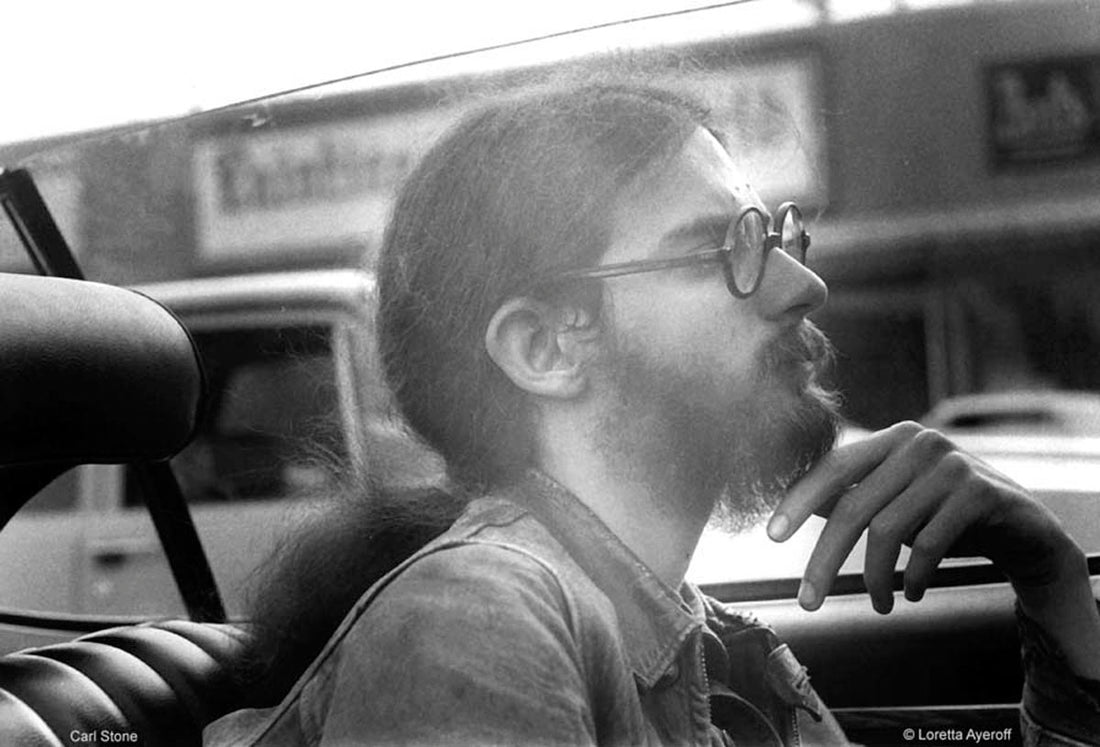
 Diapason Gallery, New York, 2004, Photo: Hanae Hayashi
Diapason Gallery, New York, 2004, Photo: Hanae Hayashi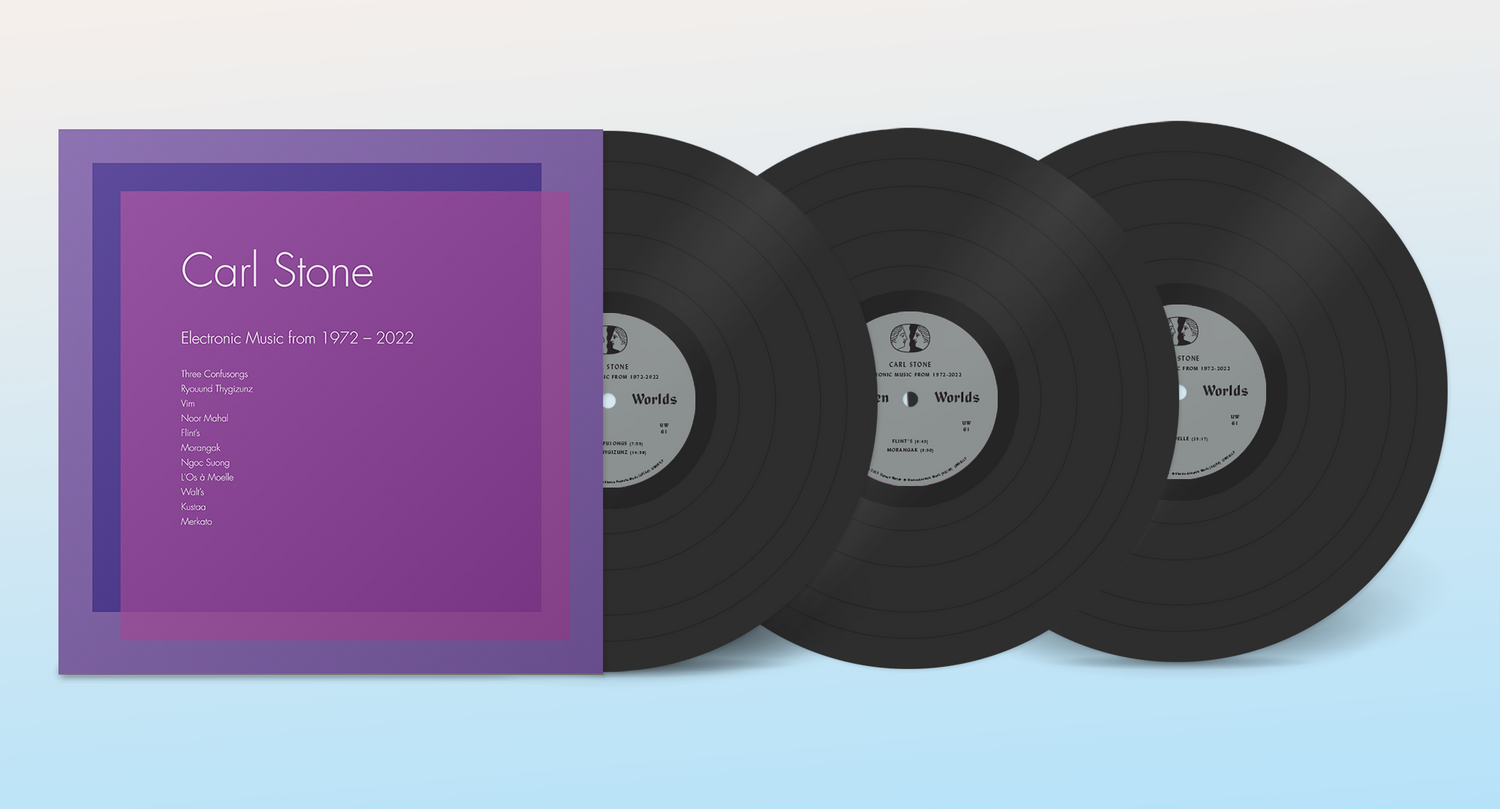
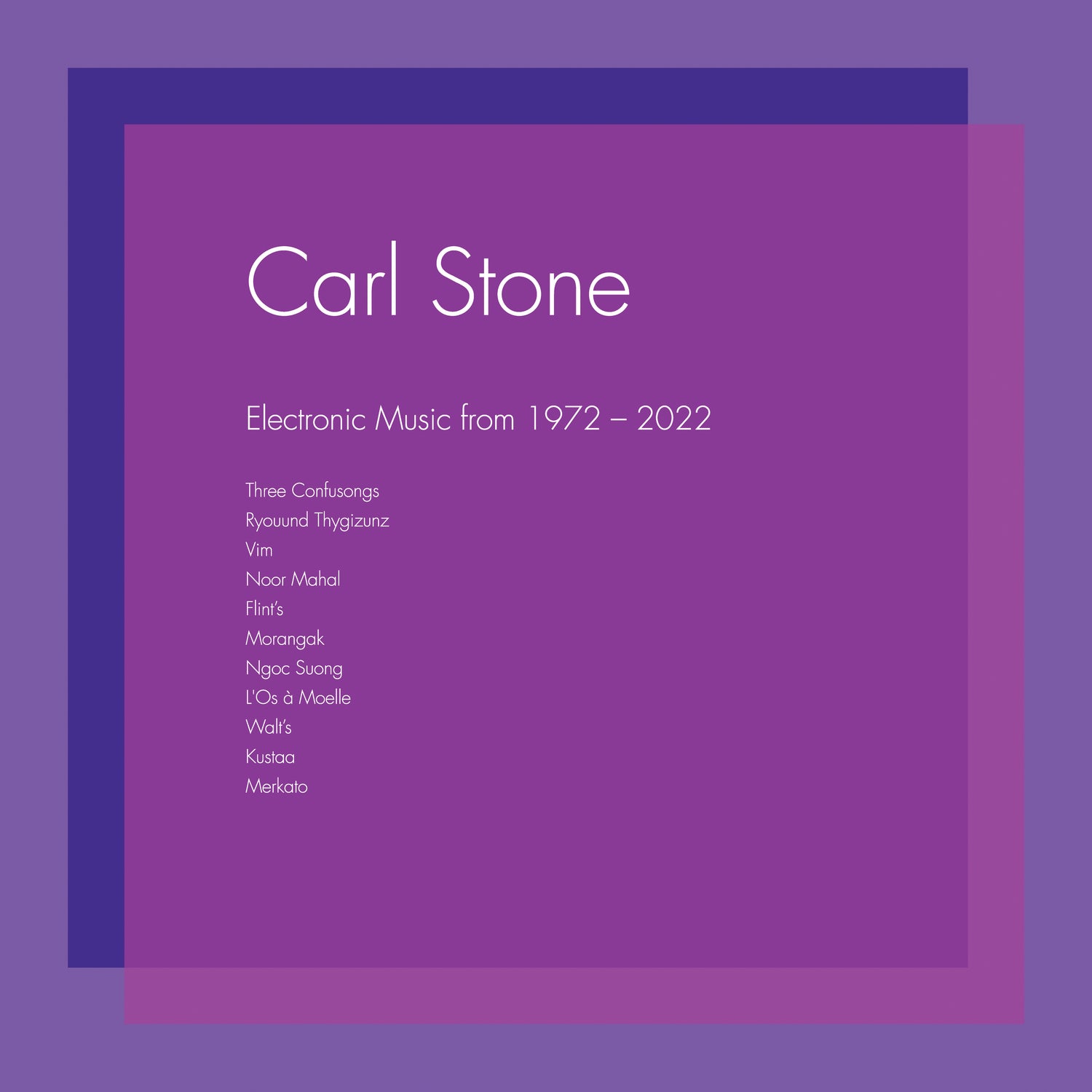
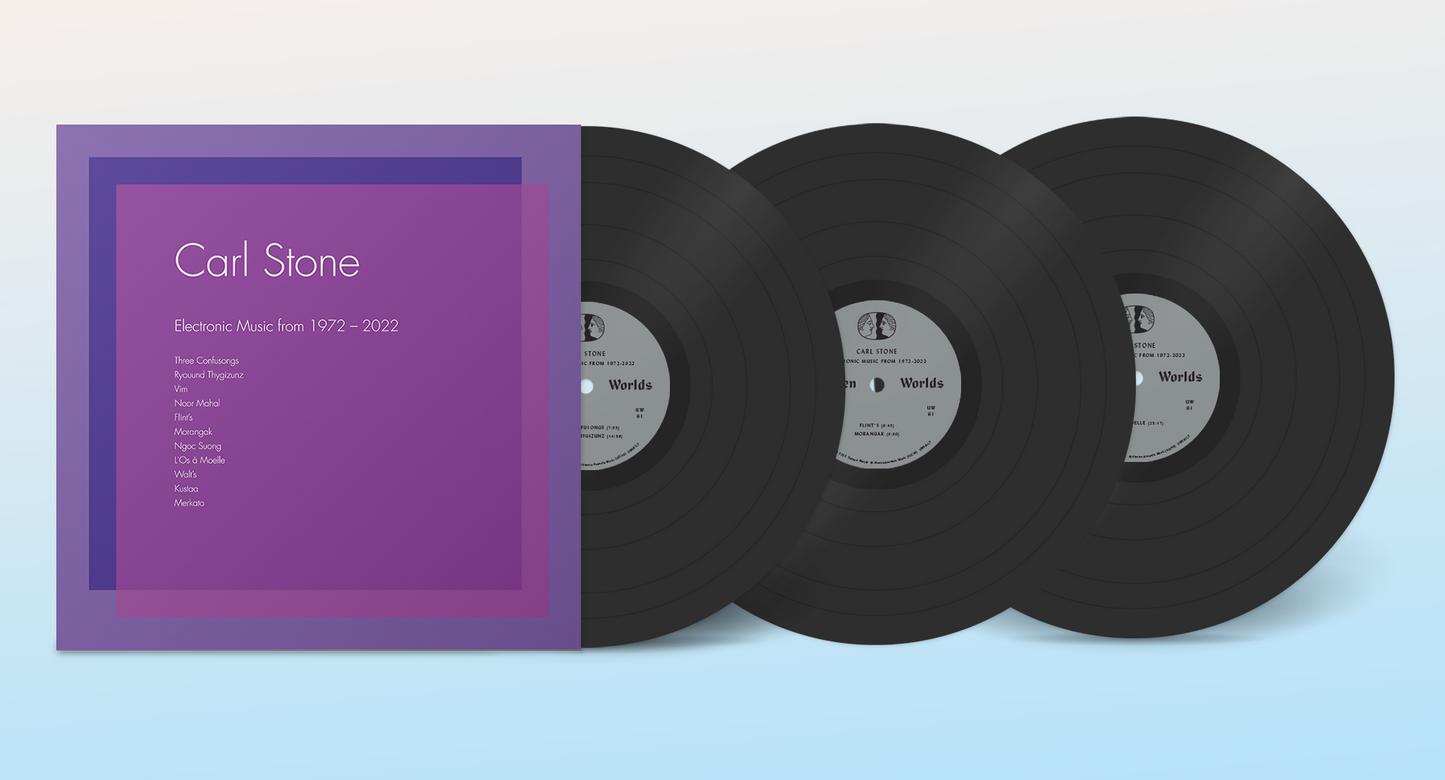
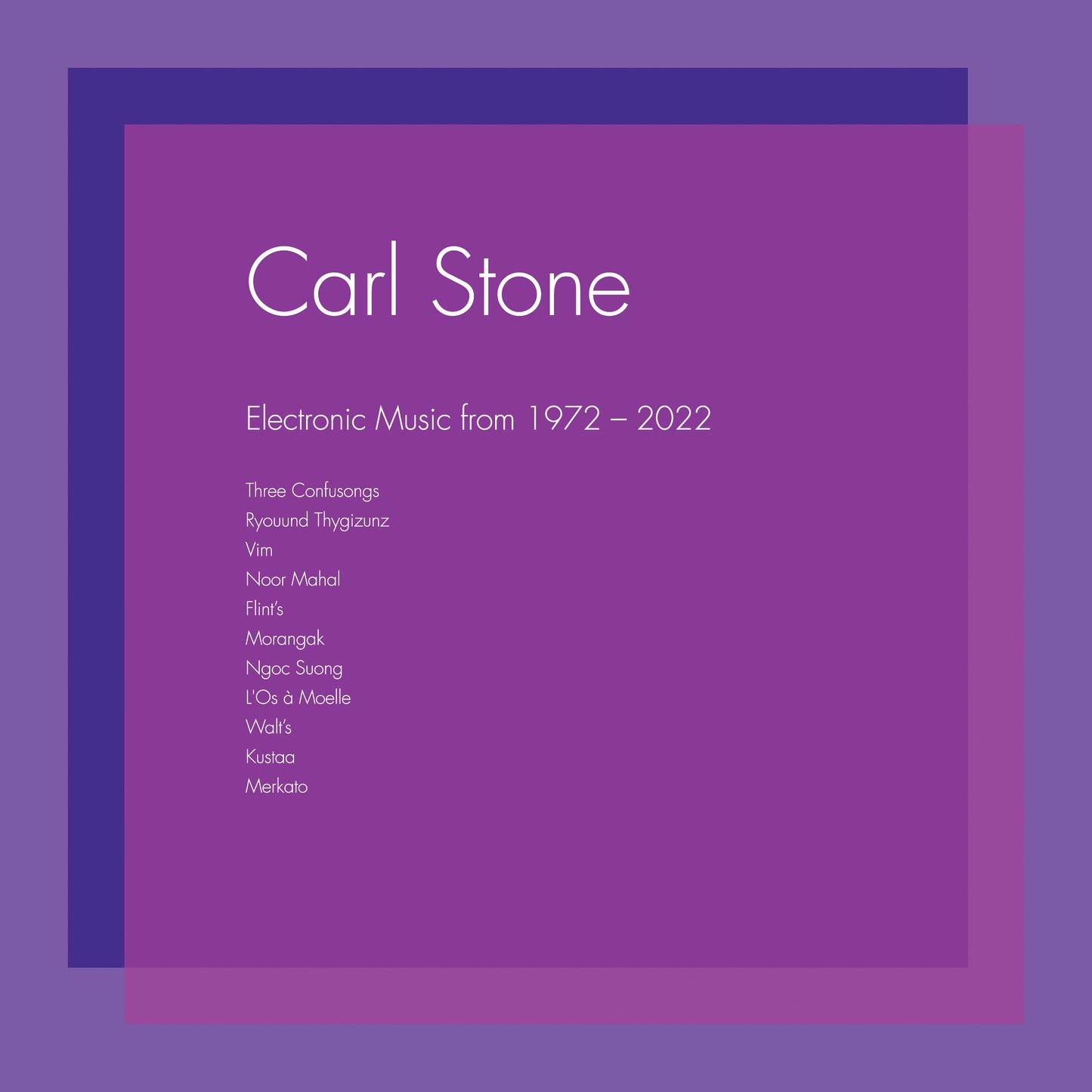
![[product title] - unseen worlds](http://unseenworlds.com/cdn/shop/products/UW15CoverHiRes_533x.jpg?v=1566370080)
![[product title] - unseen worlds](http://unseenworlds.com/cdn/shop/products/UW20_-_Cover_Hi_Res_533x.jpg?v=1566370079)
![[product title] - unseen worlds](http://unseenworlds.com/cdn/shop/products/UW26_-_Carl_Stone_-_Baroo_533x.jpg?v=1558493313)
![[product title] - unseen worlds](http://unseenworlds.com/cdn/shop/products/himalaya_533x.jpg?v=1566021680)